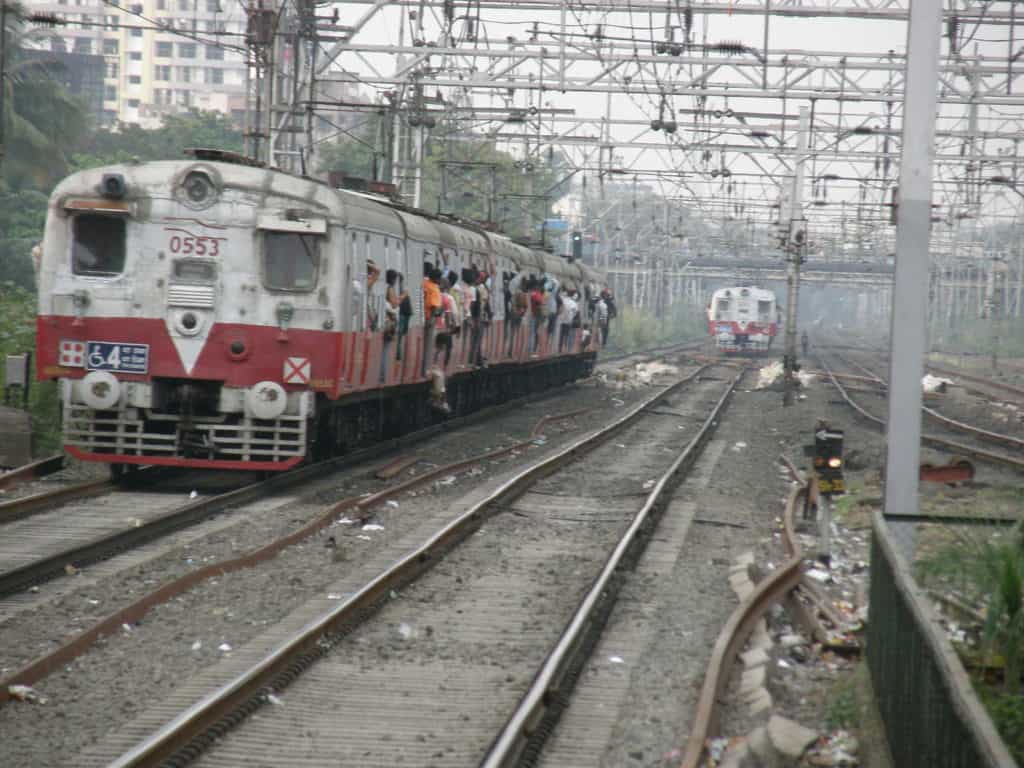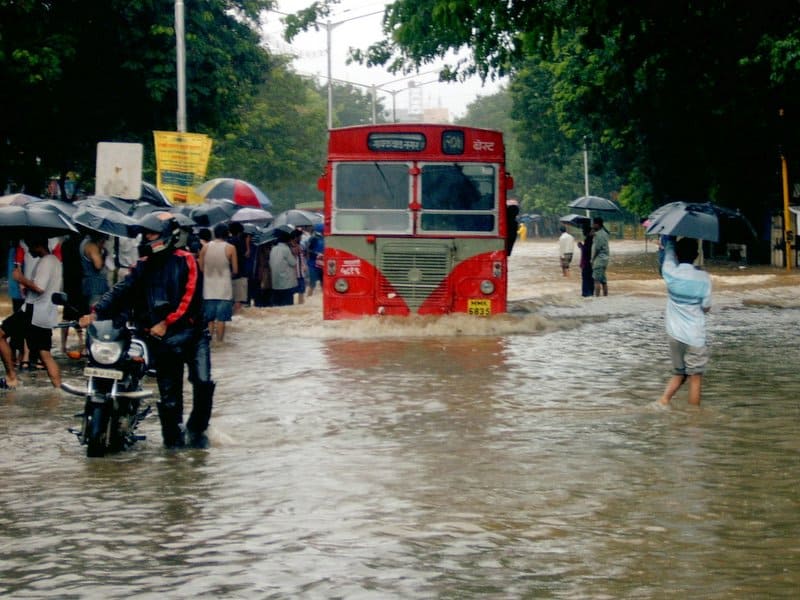What use is it if Mumbai reduces lockdown restrictions but doesnt open up its main public transport system? Unlock – 5 started from October 1 but the local trains are still restricted to a select few.
Local trains can be accessed by ‘essential workers’ by using a QR code based electronic pass system, that can be availed only through their organisations.
Subsequently, personnel from private power companies and is now stretched to include private medical staffers, aircraft maintenance personnel, private bankers and even advocates were allowed on trains.
More buses are being brought in to supplement the existing BEST bus networks, but they barely meet the needs of almost three crore people living in the Mumbai Metropolitan Region.
Since many workplaces have opened up, people are flocking to the only other cheap mode of public transport – buses. People are seen pouring out of state transport buses even on choc-a-block highway roads.
On October 10, Health minister Rajesh Tope hinted that the train services could open by October 20 and hoped that the state could unlock completely by November since he said, “we have to learn to live with Covid”.
Local train access to all
The opening up of train services in Mumbai was very gradual with first only 362 train services operating for government and police personnel from June 15, moving on to 705 services daily from July 1 onwards and to 855 services as on September 21.
As on September 22, about 4.25 lakh e-passes were issued, which is only 5.38 % of the 78 lakh passengers (35 lakhs by Western Railway and 43 lakhs by Central Railway) who were regular users of the service in the pre-COVID times.
The Mumbai suburban railway is operating at about 30% of its operational capacity by running only 937 services daily as against the 3141 services it operated before the lockdown.
Lawyers fought in the Mumbai High Court to be allowed to use trains. Journalists – who were classified as essential workers by the central government – have taken delegations to Chief Minister Uddhav Thackeray requesting access to the local trains to no avail. Four members of Maharashtra Navnirman Sena (MNS) were arrested on September 21 for illegally boarding trains.

Scientists speak
About 40 scientists across India had on September 1, issued a statement against lockdown strategy to combat the virus, demanding opening up of public transportation and unrestricted movement of people and goods. They cited that continuing restrictions on public transport was cruel for the vast majority of Indians who did not have the financial reserves to sustain themselves through an extended period of economic inactivity. This has directly translated into lives lost, the scientists stated. Opening private transportation and air travel was insufficient they felt since the vast majority of Indians depended on public transportation. Mumbai’s metro is also one of the few cities in the country that is yet to open up.
A team of Tata Institute of Fundamental Research (TIFR) researchers had recommended gradual re-opening of workplaces and train services in August. The report noted that a partial opening of workplaces was not feasible without a corresponding opening of the trains.
It, therefore, recommended gradually opening up workplaces and correspondingly train services of up to 33% capacity in September, 50% in October and 100% functional services by November accompanied by staggering of work times and people working in shifts to help maintain some social distancing in trains.
The TIFR report said that such reduction in restrictions could result in a minimal and manageable second wave in Mumbai that is expected to attain herd immunity by December end to January post-which it recommended opening up educational institutions in Mumbai.
“With increasing proportions of Mumbai already infected, one does not expect a large number of infections coming from trains. This is corroborated by our model. If indeed the infections coming from trains look manageable, their occupancy can be gradually increased,” says Prof Sandeep Juneja, Dean, School of Technology and Computer Science, TIFR.
Too swift an opening may lead to a sudden increase in the spread of the epidemic leading to a ‘difficult to manage’ second wave of hospitalisation, the report observed.
Trains had been running below capacity a week prior to the lockdown on March 23, after which the train services were completely halted for 84 days till June 15. Hence, trains did not contribute significantly to the initial spread of the virus in Mumbai.

Buses vs trains
“Shouldn’t the government consider implementing the option of staggering of office timings rather than block trains to many?” asks Nandkumar Deshmkukh, President, Federation of Suburban Railway Passengers Association. “How come only crowded trains spread Covid-19 and not crowded buses? what is the logic behind this disparity?”
The Maharshtra government did conduct a series of meetings between the Brihanmumbai Municipal Corporation (BMC), the railways and other departments to consider staggering office timings. No concrete steps have been taken in that regard since.
On October 9, the Bombay High Court, the Maharashtra government complained that trains could not be opened for all as yet though its frequency could be increased because people failed to follow health protocols and social distancing norms. Advocate General Ashutosh Kumbhakoni said people failed to follow basic safety precautions in trains by talking on mobiles with their masks lowered. He also stated that the state chose to adopt a parental approach because of the “capacity of the health sector to treat patients”.
There seem to be no explanations by the state government about why there cannot be a staggered opening up of local trains to all city dwellers. Aditya Thackeray, a Cabinet Minister and son of the Chief Minister was quoted in the party mouthpiece Samna, saying lcoal train could be opened for all from October 15.
“It could be dangerous to open the railway services for all considering the large volumes of people railways tends to attract. Buses would be safer and the bus network could be strengthened further to avoid the hellish conditions in which people are travelling to work,” says Subhash Gupta, President, Rail Yatri Parishad and Member, National Railway Users Consultative Committee. “So many schools buses are idling away and could be roped in to ease the road transport,” he suggests.
But for people like Sandeep Walunj, life gets harder. In his monthly salary of Rs, 20,000 he spends about Rs 200 everyday to commute from Vangani beyond Kalyan to his workplace on Sandhurst Road. His train pass cost him Rs 400 every month.